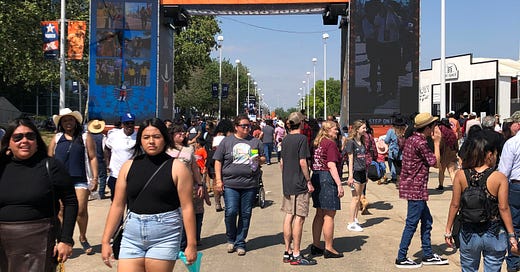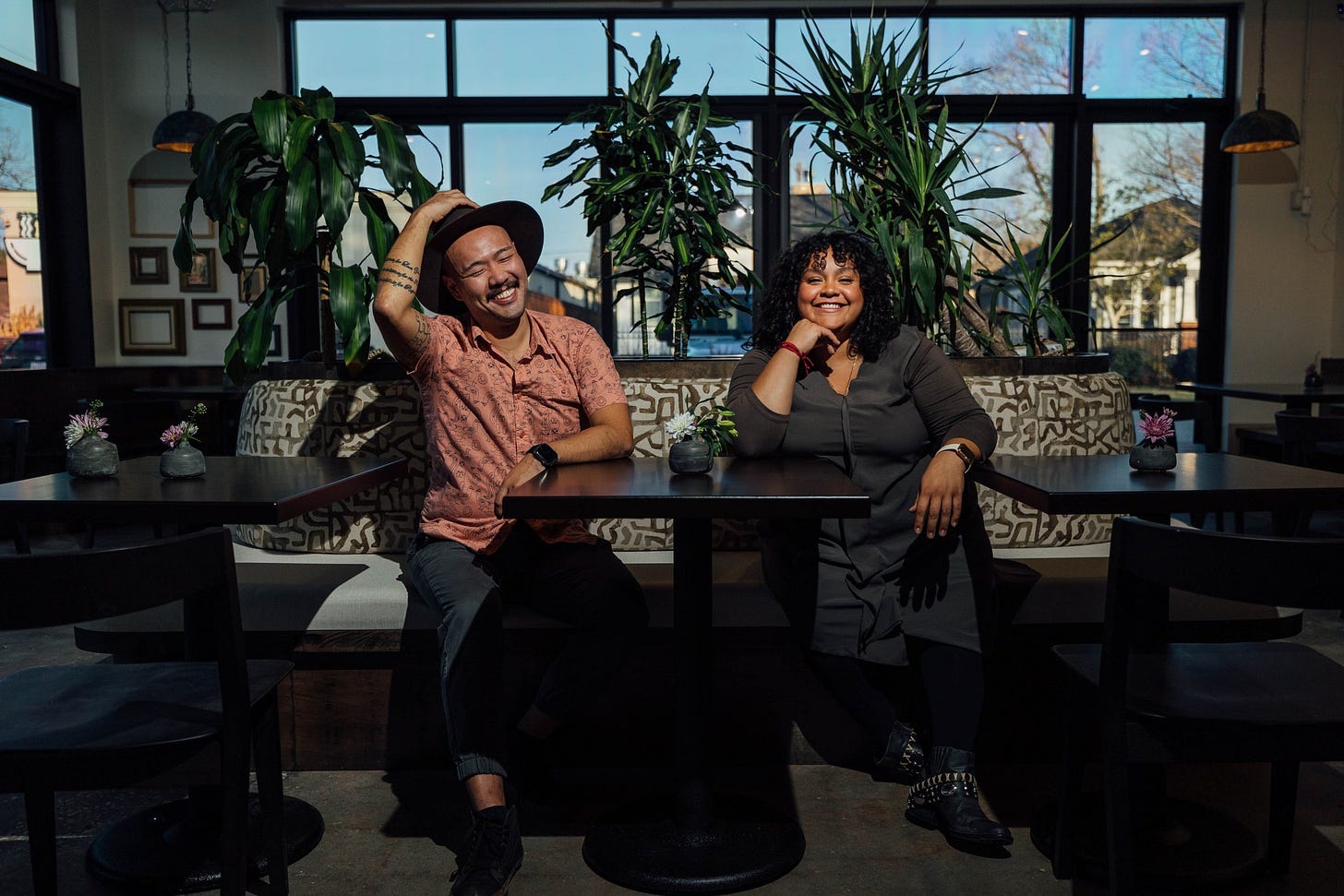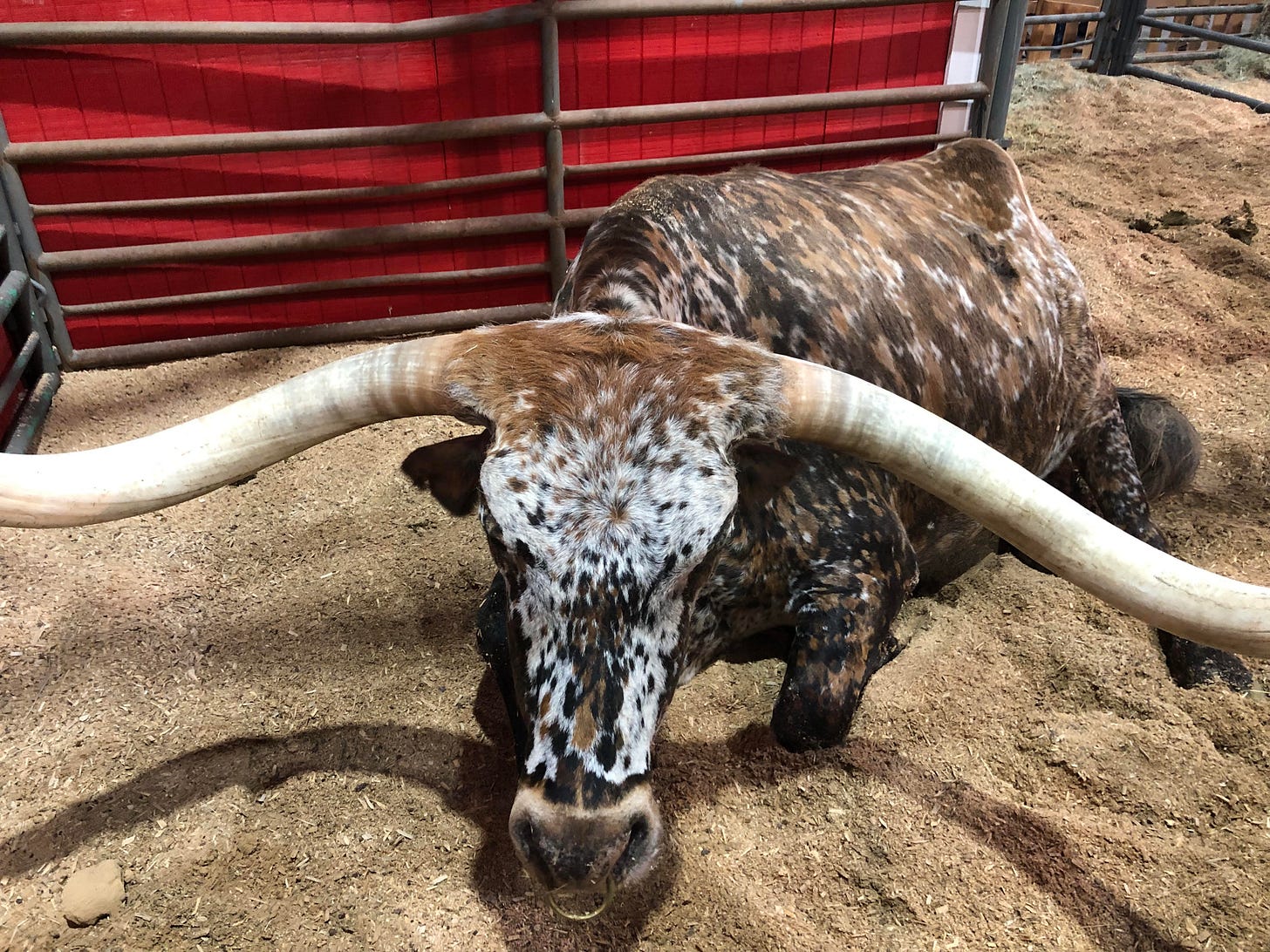Spirit of Place: Houston, its rodeo, its cuisine.
Houston is not typically Texas, but then much of Texas is not typically Texas, either. In Houston, you get a traditional rodeo and probably the largest Asiatown outside of Asia.
When our daughter moved to Houston three years ago to take a job as a food and lifestyle writer at the Houston Chronicle, this fast-growing, liberal city (it has leaned heavily Democratic for the past decade) joined the ranks of our homes away from home, which include Paris, Devon, and Santa Cruz. We are just finishing up our latest trip to Houston, which included a day at the world’s largest rodeo and livestock show and a visit to Asiatown for a crawfish feast.
While those not familiar with Texas might think the rodeo is the most typical example of what it has to offer, in Houston at least—where the rodeo comes only once a year, of course—the main attractions are much more cultural than bestial. The city is home to several world-class art museums, most notably the Museum of Fine Arts and The Menil Collection, including its Rothko Chapel. But perhaps the biggest surprise (for anyone but Houstonians, that is) is that Houston also hosts one of the U.S.’s most vibrant food scenes.
Our daughter is now the food editor for chron.com, which is editorially independent of the Chronicle but, like the newspaper, owned by the Hearst Corporation. That means with every visit we benefit from an insider’s perspective on the best places to eat. Also, as during this visit, we like to arrive at the height of crawfish season, when the crustacean critters (which mostly come from Louisiana, which produces about 90% of the crawfish consumed in the U.S.) are at their fattest and juiciest.
The best place to get crawfish, and lots else worth eating in Houston, is in its vast, sprawling Asiatown. If you watched Anthony Bourdain’s “Parts Unknown,” and particularly the segment on Houston, you may already know this. For most Americans, “Chinatown” means a relatively small section of big cities like New York, San Franciso, or Los Angeles. Houston once had a Chinatown like that, and remnants of it remain. But then, in the 1990s, Asian immigrants—notably from Vietnam and Cambodia, for whom Houston had been a welcoming refuge—began to pack up and move to the Western part of the city.
Writer Dan Q. Dao captured this fascinating history in an article for chron.com last year. I will let him explain the changes that came to Houston’s Little Saigon:
…by the early '90s, change was afoot in Houston, with developers setting their sights on the vast land that stretched between Midtown to Third Ward and beyond. "You're a single-story mom-and-pop business and they're trying to build something 20 stories tall right there. How can you compete with that?" Pham says, remembering the gradual erosion of the neighborhood over time. "It was hard for my parents to watch it all disappear. We felt like lone rangers."
As first Vietnamese and then Chinese and other Asian establishments moved West, and new restaurants blossomed, the new Asiatown became a Mecca for everyone who loves to eat. Dan writes:
These days, it's common to see Houstonians and visitors of all ethnicities in Asiatown, where you can now also get Korean noodles, Taiwanese pastries, and Mongolian hotpot in addition to Vietnamese bánh cuốn rice rolls and crispy Chinese bánh bột chiên (fried rice cakes). Then there's Viet-Cajun, a born-in-Houston cuisine that drove a national crawfish craze in the early 2000s. It was in part the 90s boom, and the allure of opportunity it brought, that created the conditions for a global food phenomenon to flourish right on Bellaire Boulevard.
Many, if not most, Asiatown restaurants are located in small strip malls, and it seems that new ones are opening every day in this now vast and still-growing culinary landscape. On this visit, we went to Crawfish & Beignets on Bellaire Boulevard, the main drag of Asiatown around which the new community blossomed. Eating crawfish properly requires a little instruction, and there is a small amount of flesh in each one, so if you come here be sure to order at least two pounds per person (and don’t forget to include corn-on-the-cob and potatoes.)
Before leaving the topic of Houston food, I want to recommend a very new restaurant we visited a couple of evenings ago, called Jūn (pronounced “June”) where one can sample the best of what is called “New Asian American” cuisine. It’s run by chefs Evelyn Garcia and Henry Lu: She grew up in Houston and he in the Bronx, and their cooking, as they put it on their Website, “is a celebration of our differences and funky flavors coming together…”
The fare was light, original, and absolutely memorable. (Highlights from the menu: House made pickles, flame torched oysters, roasted carrots, gulf shrimp, lamb curry…)
It’s time to leave Houston now. I have to decide whether to leave the cowboy hat I impulsively bought at the rodeo here at our home away from home, or take it back to New York, where it is unlikely to be appreciated (even the fedora I bought in Austin a few years ago is now considered an affectation by the fashion police and can only be worn in irony, I am told.)
Coming soon, more on this newsletter’s habitual topics: Sexual harassment, the origins of Covid, the war in Ukraine, the failings of the American media, etc. But maybe also, before too long, another installment of Spirit of Place.







Great to hear this eclectic report on Houston.